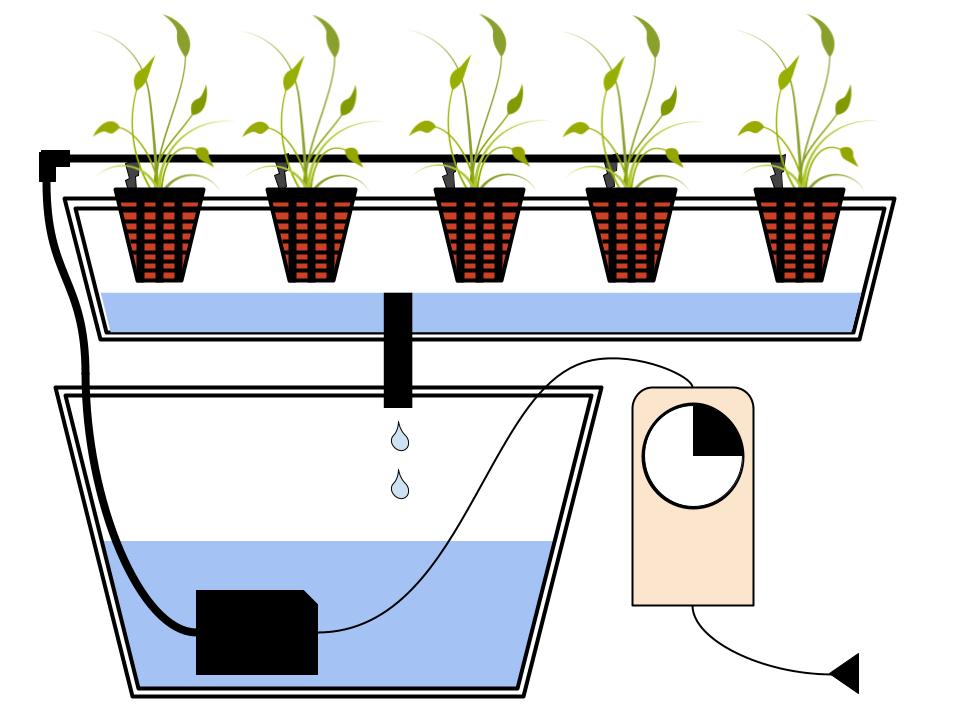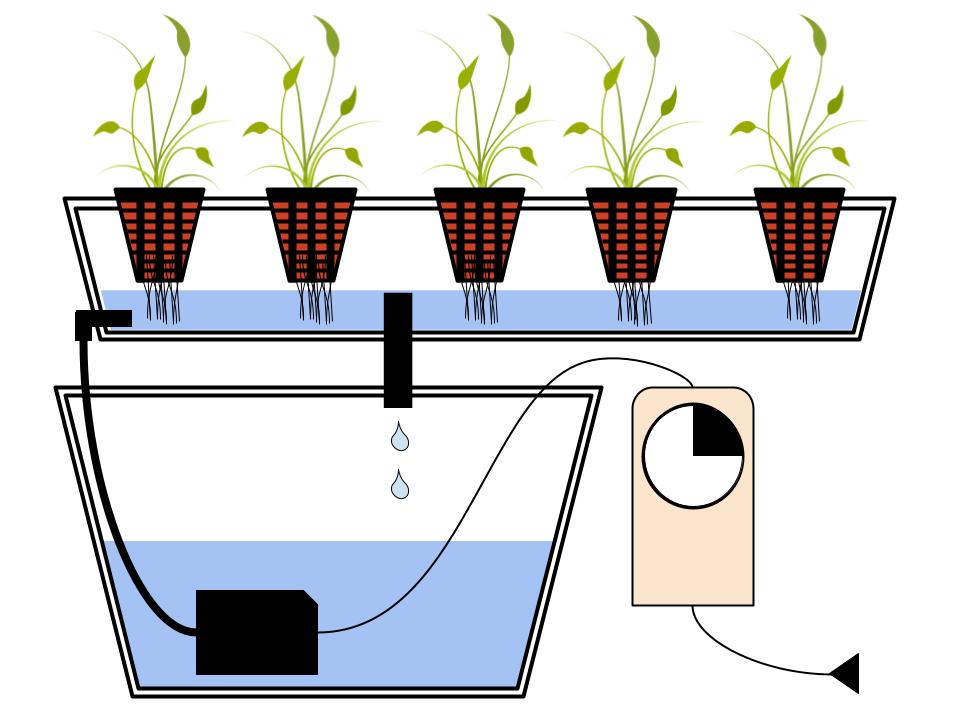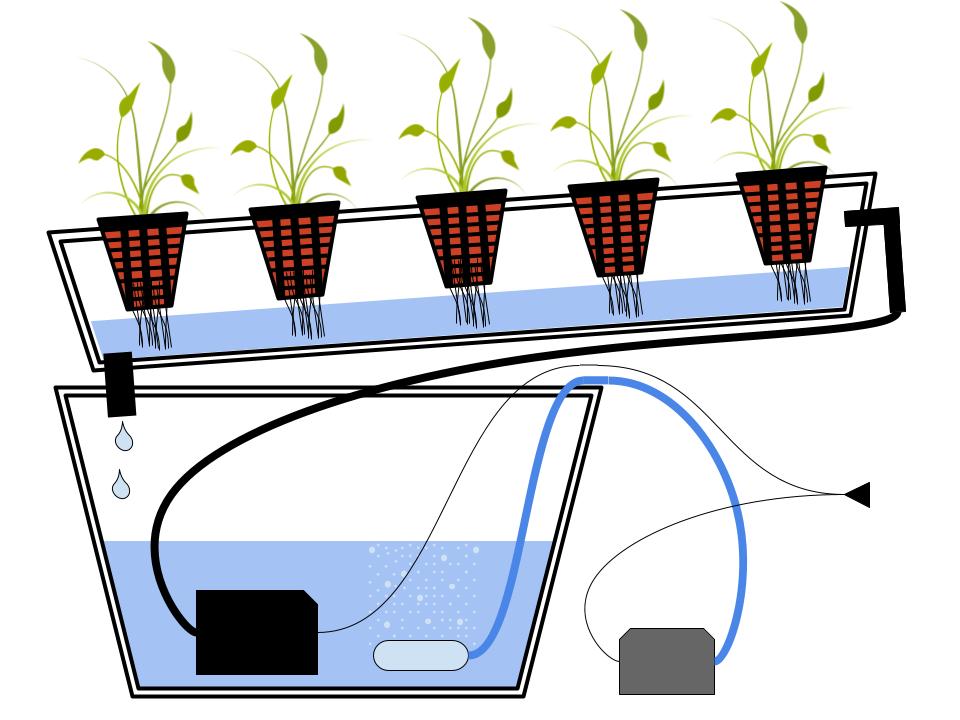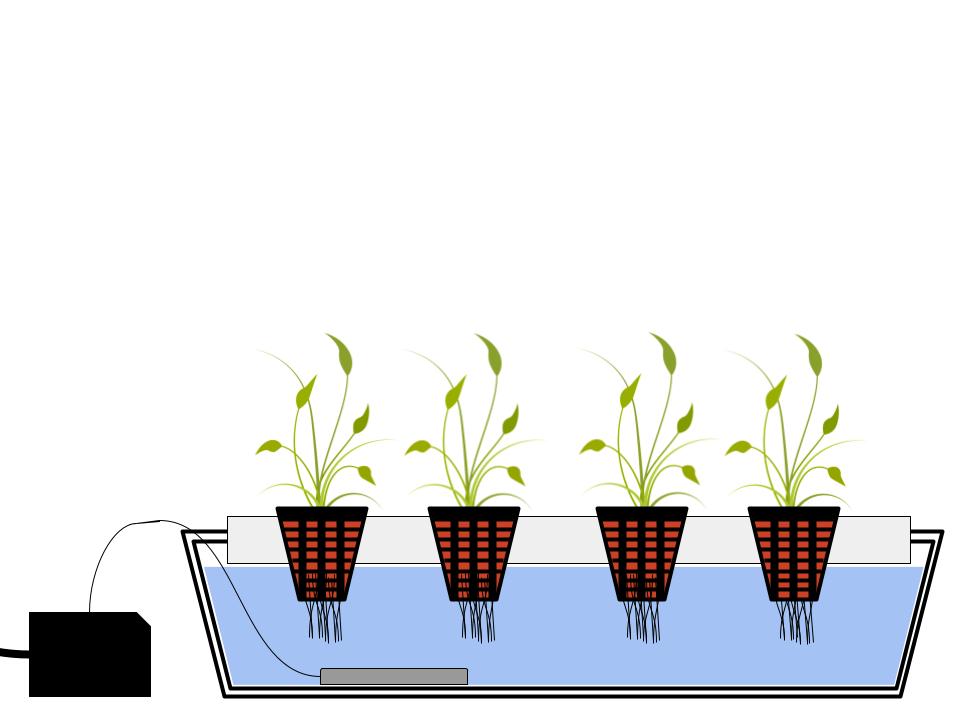In this article, I am going to cover what is hydroponics and its benefits as well as the most common methods of hydroponics. This should give you a good ide of where to start before building your own hydroponics system. Hydroponics is a great way to grow fresh organic veggies and herbs for you and your family.
The advice below is part research and part from my own experience and to save you the trouble and common mistakes, I have compiled this article to kit you up.
Get a sustainable food source! What if the shops in your area had to not exist or the farmers had to just stop producing? Build a way to get basic veggies and herbs at home – Paul Hutchinson
How much skill is needed?
- Technical knowledge

- Benefit:

- Enjoyment:

What's covered in this article?
What is Hydroponics?
I feel, hydroponics is the future of farming! Hydroponics is easy and the best part is, you don’t even have to have much space and it is very affordable to set up a hydroponics system.
In short, Hydroponics is a way to grow fresh organic food without soil, but to rather use nutrient-rich water to supply all that your plants needs. With the right grow medium, the roots of the plants don’t need to push the sand out of the way, in search of and nutrients. They can just focus on growing and producing.
Benefits of hydroponics
Hydroponics can be set up anywhere, even in a basement or an underground nuclear bunker. With that said, you would need a good set of grow lights and fresh air.
There is no soil in the hydroponic grow-bed system. Different types of growing media are used instead. Grow media can be in the form of stones, volcanic rocks and in some cases sponges, depending on the method you choose.
The grow media and the water is filled with all the nutrition the plans need to allow the roots of the plant to easily acquire what’s needed. This allows the plant to grow much faster, and in a protected area, you can grow before and after the natural season of the plant.
Here are some of the key elements of why Hydroponics is so appealing
- Hydroponics uses a lot less space than traditional modern farming – as much as a fifth of the space or less.
- Water saving – it saves up to 10% of the water used in traditional modern methods.
- Affordable and far cheaper to get started and grow as you need.
- Plants grow really fast, like 50% faster and with larger sizes and a better taste.
- Growth can happen all year round.
- Full control of your nutrients. Only a fourth is used than traditional modern farming methods.
- No need for any herbicides or pesticides.
- Your whole family can play a role in the enjoyment of growing your own food.
This method is a good starting point before upgrading to the aquaponics growth system where fish are used to make the nutrients for your plants. Aquaponics is basically simulating a river and the river banks.
Four main types of hydroponics Systems
There are many types of hydroponics systems out there, but for this article, I am going to share four of the most used types. This will allow you to pick the one that best fits your needs. I will update this article and right more practical articles in the future.
The Drip System
A Hydroponic drip system works by the mineral water dripping into the baskets where your plant would be planted. The excess water runs into the growing reservoir which will drain into the main reservoir.
There are mainly two methods for draining:
- A recovery drip system
- Non-recovery drip system.
A Recovery drip system is the most common and more efficient of the two.

What's needed to build a Drip System:
- Grow medium (like stones, something for your plans to root in.)
- Baskets
- Reservoir
- Water pump
- Grow bed
- Electrical timer
- Pipes, fittings and baskets
Flood and Drain Flow System
A Flood and Drain Flow System is like a Drip System .Basically, the pump runs on a timer and floods the grow bed, moving the fresh nutritious water and the excess then flows through a draining method, back into the reservoir.
There are a couple of ways to set up the draining method. Bell sifen and drain. I normally use a variation of this idea.

What's needed to build a Flood and Drain Flow System?
- Grow medium (like stones, something for your plans to root in.)
- Baskets
- Reservoir
- Water pump
- Grow bed
- Electrical timer
- Pipes, fittings and baskets
Nutrient Film Technique
Normally, the Nutrient Film Technique, is set up on a wall with large drainage pipes that slowly trickle the water past the root of the plant. The nutritious water is aerated before it is set on its path to deliver all the goodness to the plants you are growing.

What's needed to build a Nutrient Film Technique?
- Grow medium (like stones, something for your plans to root in.)
- Baskets
- Reservoir
- Water pump
- Large drain pipe and fittings
- Airstone and fittings
- Air pump
- Pipes, fittings and baskets
Deep Water Culture system
This is by far the easiest type of Hydroponics that has been developed. It is great starting point and easy to teach.
By having your plants just float on top of you nutrient water, an air stone adds oxygen to the water and only a grow tray is needed. This is a classic example that any family can do hydroponics
The only shortfall is that not all plants like this method. But, yet again, a good starting point.

What's needed to build an Aeroponics System?
- Grow medium (like stones, something for your plans to root in.)
- Baskets
- Large Grow Bed
- Airstone and fittings
- Air pump
- Styrofoam (To float your baskets in.)
Conclusion
As you can see there is no reason to not supply your family with healthy veggies. Start somewhere, even if your hydroponics system runs on your kitchen counter near a sunny window. Anyone can do this.
If you have already started your hydroponics system or this article helped you get started, then please show me in the comments how it’s going and what you have built.
